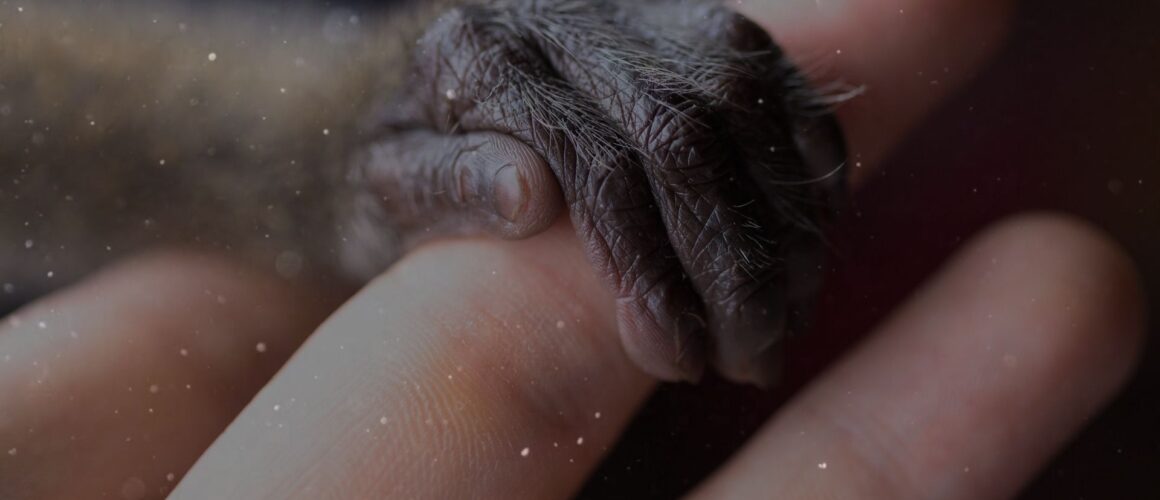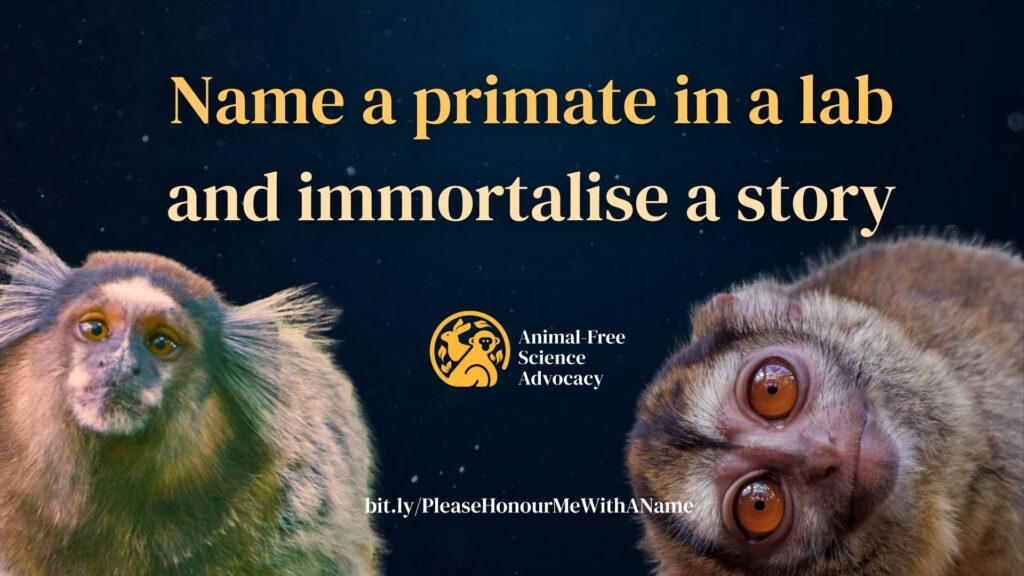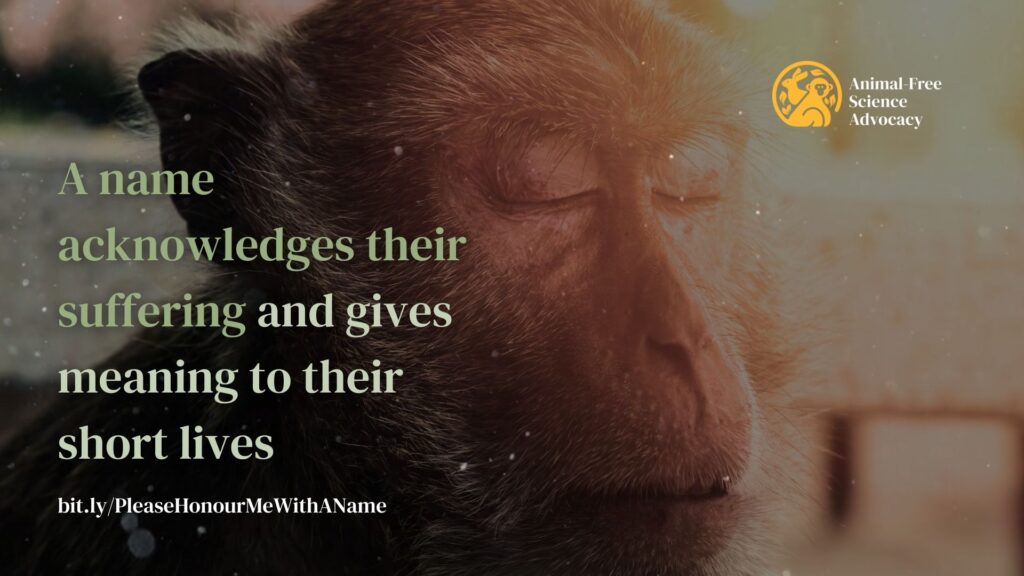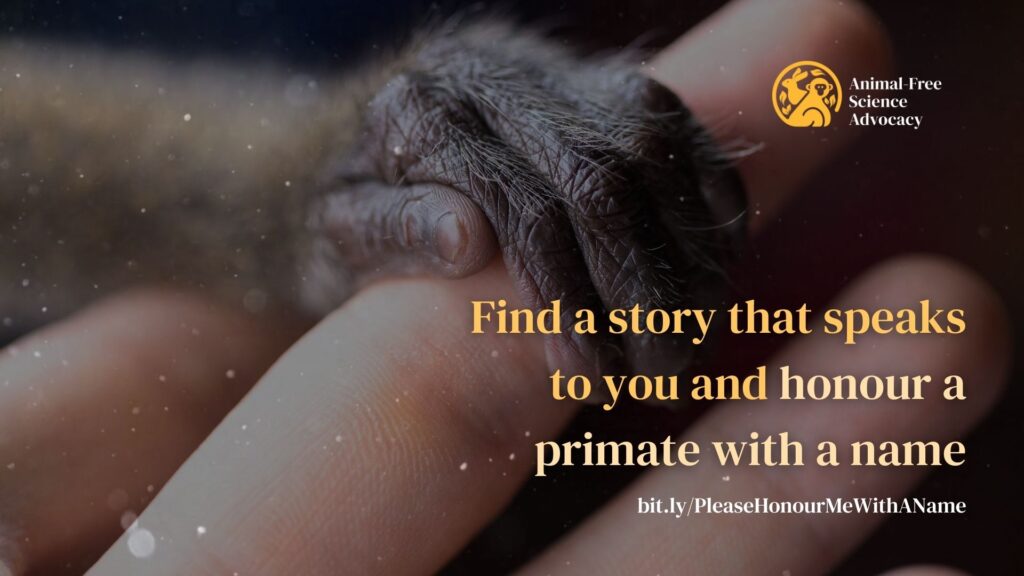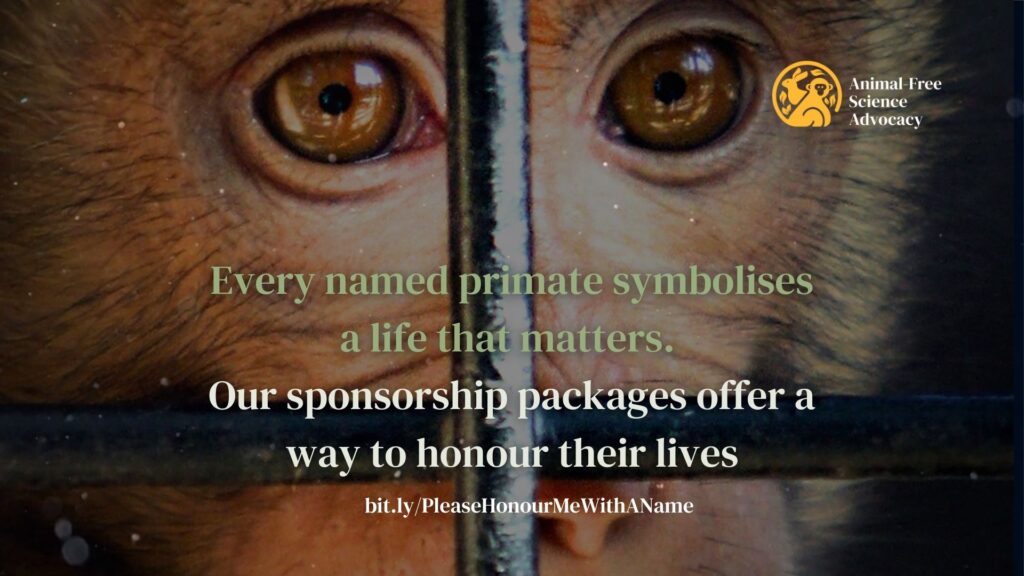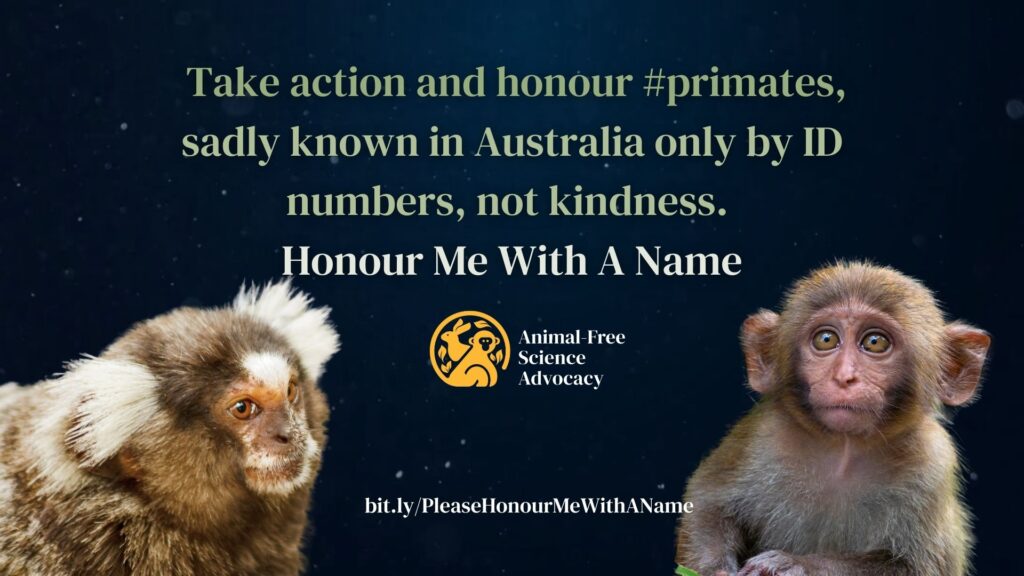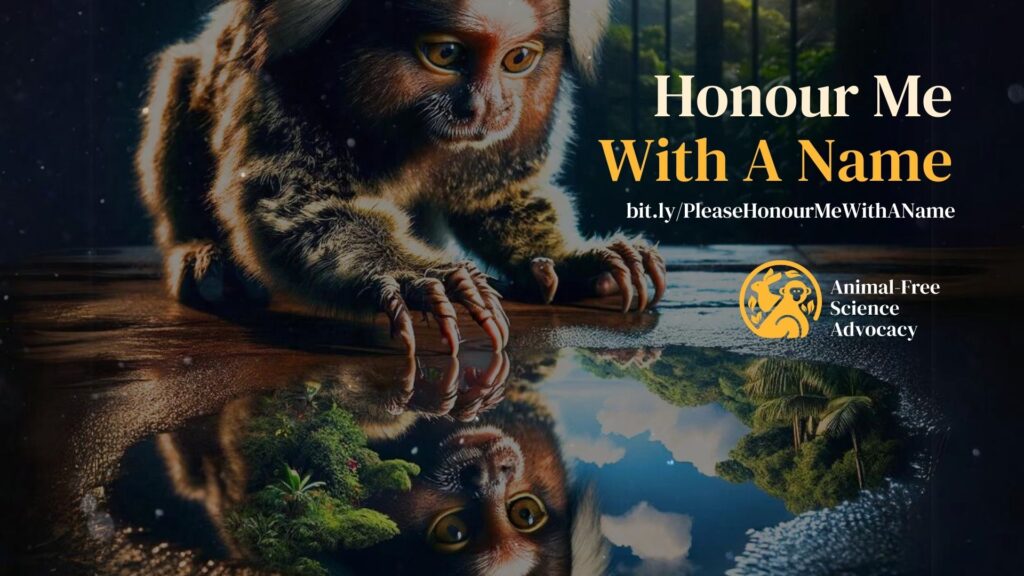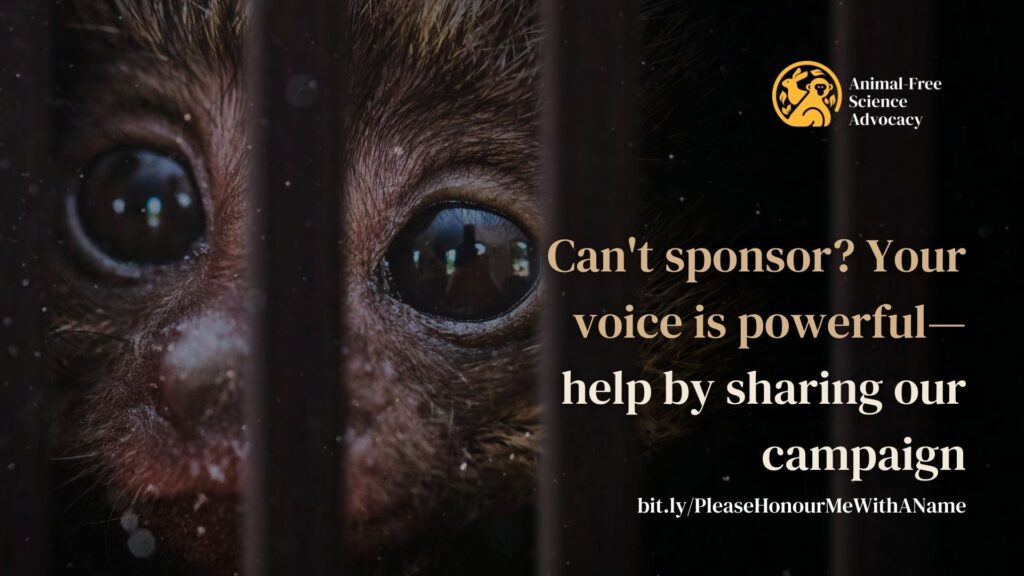Every year in Australia, hundred’s of primates are confined to laboratories across Australia. Many are subjected to cruel experiments that rarely lead to meaningful advancements in human health, and they are almost always killed after these experiments. These primates range from macaques to marmosets, baboons to night monkeys. Some researchers see them merely as ‘resources’, ‘lab tools’ or ‘animal models’. Instead, we see them as unique, non-human sentient beings, deserving of dignity, respect and understanding.
Ways you can take action
Name a primate
Firstly, browse the stories of individual primates, each one is based on factual information we have gathered about their lives in labs.
Secondly, select one of our sponsorship packages. Your contribution helps us to campaign for an end to animal experimentation in Australia.
Bronze Package ($250): Receive a personalised certificate and a Maurice the Monkey plush toy, with an optional shout-out on social media.
Silver Package ($500): All the benefits of the Bronze package, plus an optional thank you call and a personalised poster featuring the story of a primate you have named.
Gold Package ($750): Includes all Silver benefits, a thank you on our website, a stylish AFSA marmoset T-shirt, and an exclusive behind-the-scenes tour at Banana Cabana Primate Sanctuary in Sydney.
Diamond Corporate Package (Minimum $1,500): Ideal for businesses, this package includes a presentation to your team, features your company’s logo on our site, and other Gold Package benefits.
*After placing your order, you will receive an email to determine your preferences for your package. If the primate you select is shown as ‘sold out’ this means a name has already been allocated.
1. Share our campaign
Each primate’s image and story is shareable from the shop to social media. So even if you aren’t supporting our campaign financially, you can support it by sharing these stories widely to your friends. Use the hashtags #HonourMeWithAName and #BanPrimateExperiments so we can find your posts. Read the stories now.
2. Tell the Australian government to cease funding primate research from public funds
Complete this email template from DoGooder and send this off to the National Health and Medical Research Council (NHMRC), a major government funding body of Australian medical research.
3. Become an Animal-Free Science Advocacy member
Our yearly membership is reasonably priced at $33 AUD per year. Membership means you are supporting our advocacy work to end animal experiments in Australia and can also take the opportunity to be more closely involved in our work.
We call for publicly funded retirement sanctuary for primates used in research
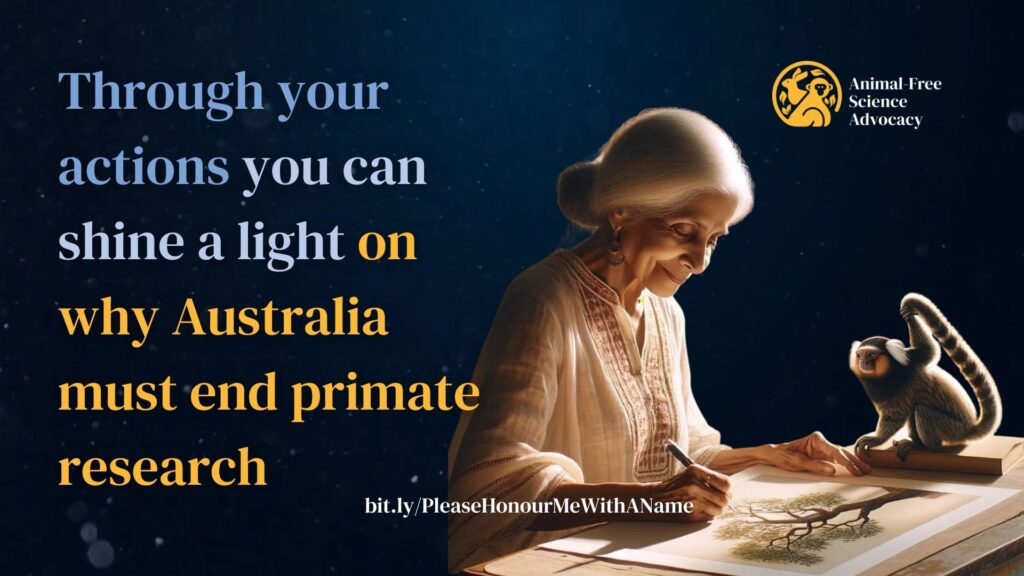
The 8th edition of the Australian code for the care and use of animals for scientific purposes was released in 2013 and it states (in section 3.4.2) that:
Opportunities to rehome animals should be considered wherever possible, especially when the impact of the project or activity on the wellbeing of the animal has been minimal and their physiological condition and behavioural attributes indicate that they can be introduced to a new environment with minimal, transient impact on their wellbeing.”
There are no retirement facilities in Australia
There are currently no retirement facilities in Australia for primates after their use in research (1). The NHMRC Policy on the care and use of non-human primates for scientific purposes requires the long-term welfare of non-human primates to be taken into account when deciding the fate of the animals. Retirement at the national breeding colonies is considered an option when the health and temperament of the animal are considered suitable.
It has been acknowledged by the NHMRC that due to their close evolutionary relationship to humans, primates are worthy of special consideration in regards to their ethical treatment. However, as mentioned in the primate principles and guidelines (2) the breeding colonies will not generally accept animals that have been used for scientific purposes.
In some cases, quality of life for primates may be possible post research
Depending on the type of research conducted on the animals, some may be left in a traumatised or deteriorated state, however many animals may still have the ability to sustain a quality life. To merely dispose of these animals when they are no longer required is a total disregard of their individual worth.
If their use has been funded by the NHMRC then the NHMRC and/or research institution must take responsibility to ensure that the wellbeing of these animals is guaranteed for the remainder of their natural lives. The establishment of a retired primate sanctuary could be funded primarily by the NHMRC and supported and overseen by animal welfare groups. These animals deserve a dignified retirement in return for their use in science.
Banana Cabana Primate Sanctuary

Located in Dural, 40 minutes from Sydney is a sanctuary that is semi-public and dedicated to providing a forever home to primates that have been abandoned or unwanted or threatened with being killed. These animals come from Zoos, circuses and in one case from a laboratory. At Banana Cabana under the care of Founder Susan Gray these traumatised primates are able to live out the remainder of their lives in peace in a rural natural setting with access to stimulating activities and large enclosures. Banana Cabana is a suitable place to retire primates from research and provides an alternative to the killing of many of these primates after experimentation.
International Primate Sanctuaries
There are three primate sanctuaries which accommodate primates formally used in medical research in the USA.
- Chimp Haven in Louisiana, USA.
- Primates Inc in Wisconsin, USA.
- Pan Pacific Primate Sanctuary in Hawaii, USA.
Help us to end the cruel and unecessary use of primates in Australian science
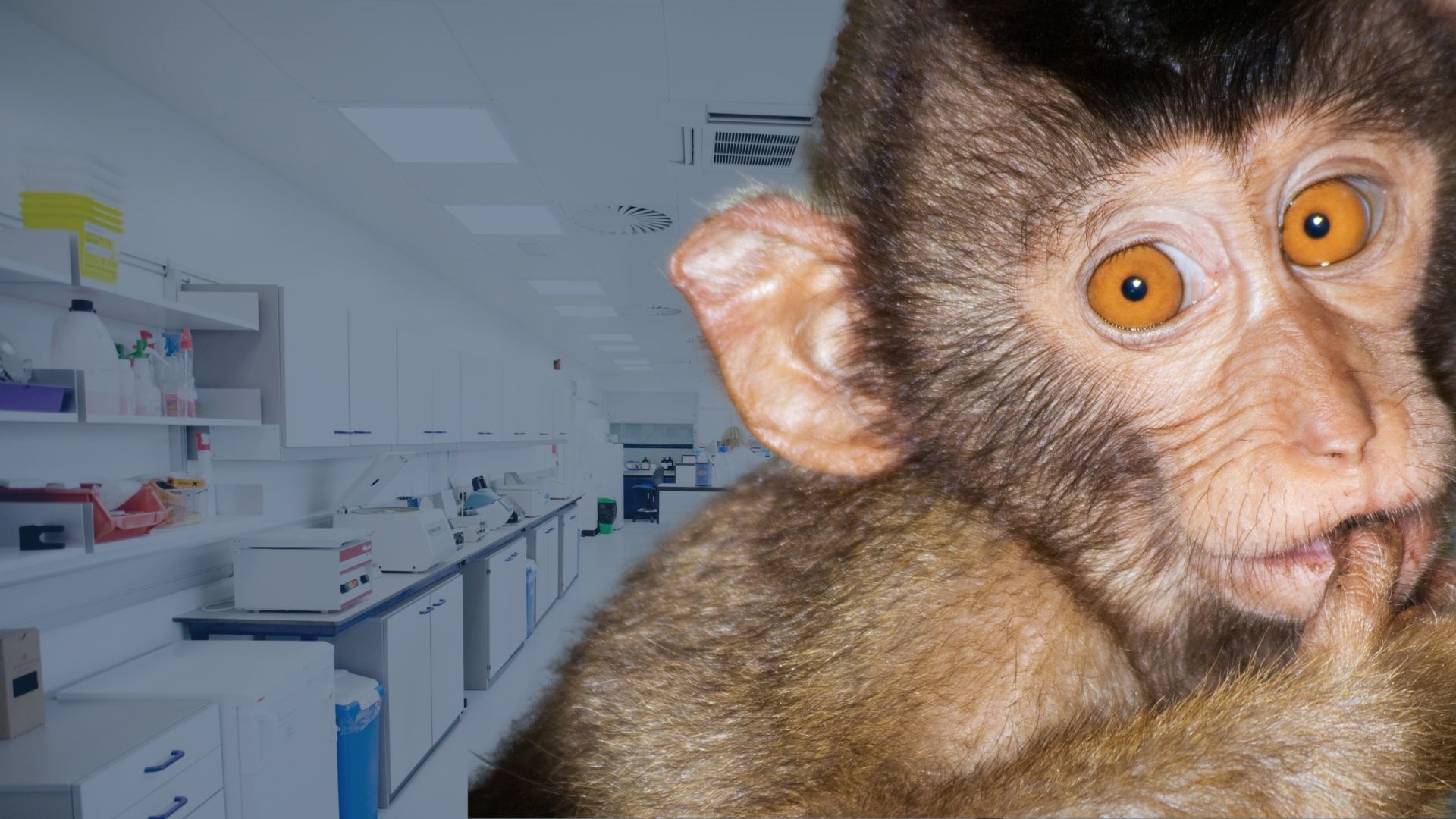
Honour Me With A Name Campaign
Learn more about our campaign to name and give dignity and respect to primates and their individual stories living in Australian labs.
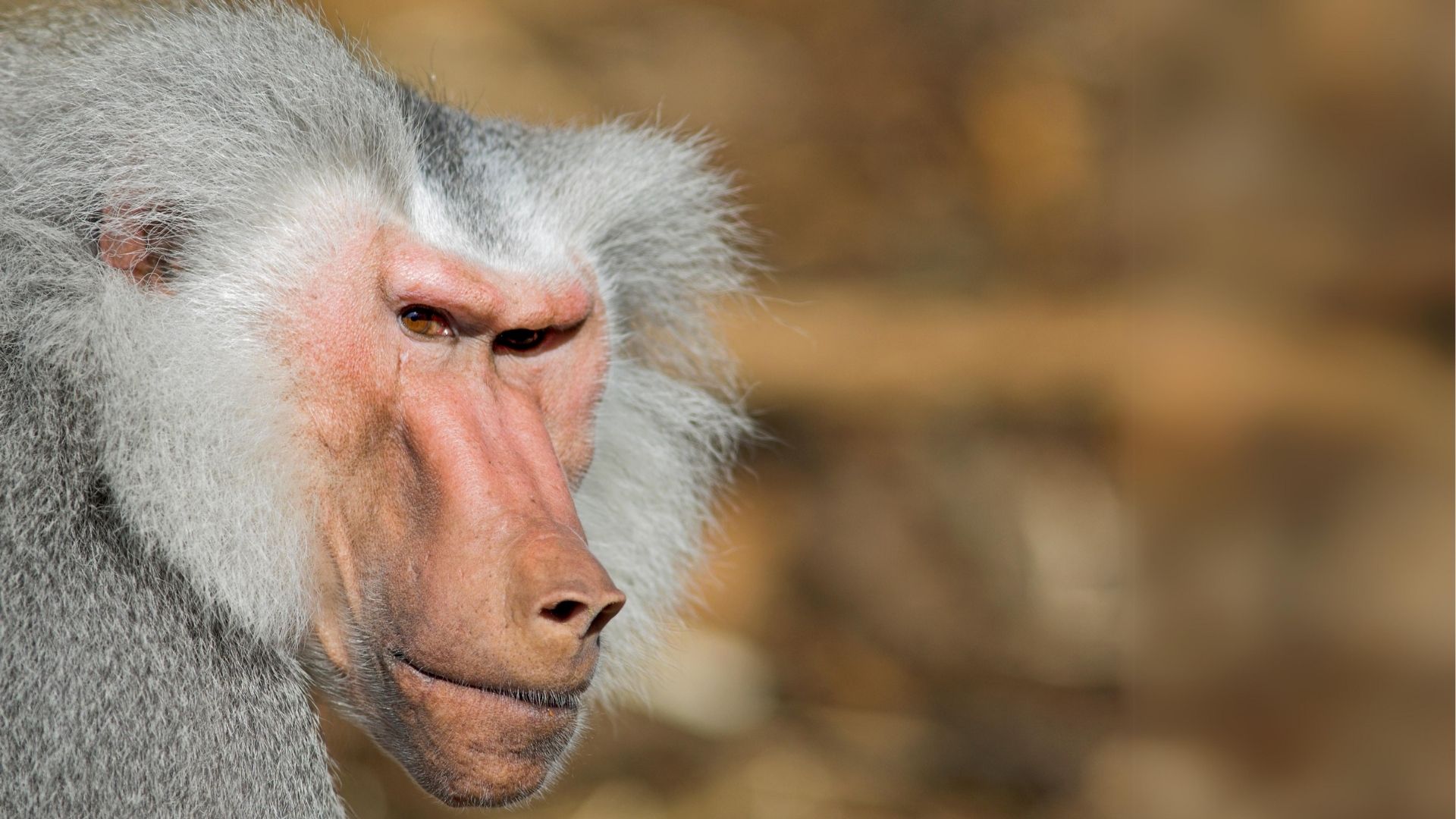
Primate Experiment Resources
Discover resources such as videos, articles and podcasts about current research on primates both in Australia and worldwide.
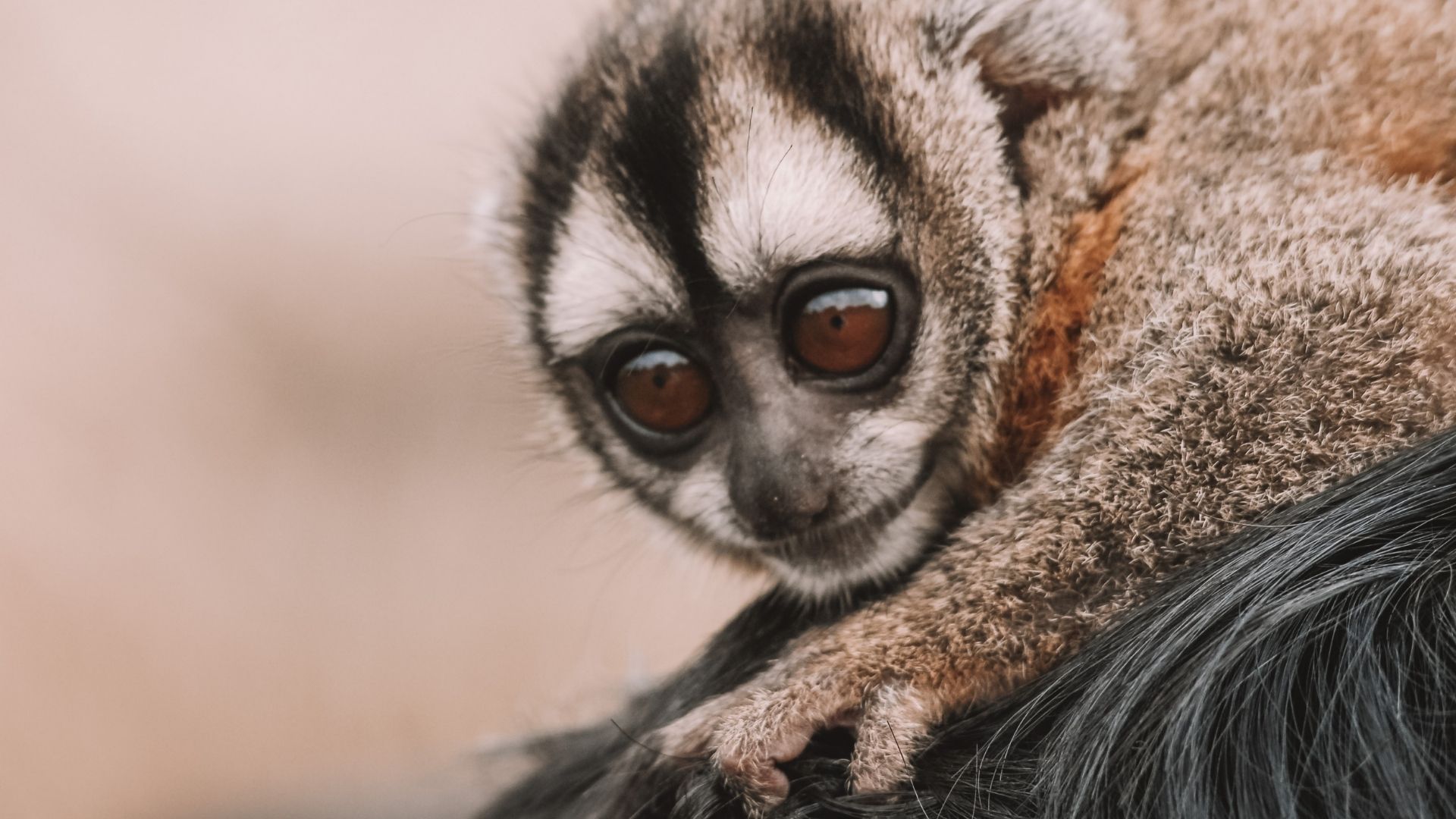
What do experts say about primate use?
Dr Jane Goodall, Dr Garet Lahvis, Sir David Attenborough and others weigh in with their views on the harms of using primates in research.
The Laws
All experiments conducted in Australia involving non-human primates must comply with:
- Principles and guidelines for the care and use of non-human primates for scientific purposes (the Guidelines), which is a revision of the NHMRC’s Policy on the care and use of non-human primates for scientific purposes 2003 (2)
- Australian Code for the Care and Use of Animals for Scientific Purposes (currently in the 8th 2013 edition) The Code currently provides that “particular justification” is required for activities involving the use of non-human primates.
- Relevant State and Territory legislation, for example, animal welfare acts. These acts refer to, amongst other things, the breeding and use of primates for teaching and research.
Together we can Ban Primate Experiments!
[1] Senate Community Affairs Committee, ‘Answers to estimates questions on notice’, Health and Ageing Portfolio, Budget Estimates 2013-14, 5/6 & 7 June 2013, question E13-104, http://www.aph.gov.au/~/media/Estimates/Live/clac_ctte/estimates/bud_1314/DoHA/Answers/104.ashx
[2] National Health and Medical Research Council, (2016) Principles and guidelines for the care and use of non-human primates for scientific purposes
